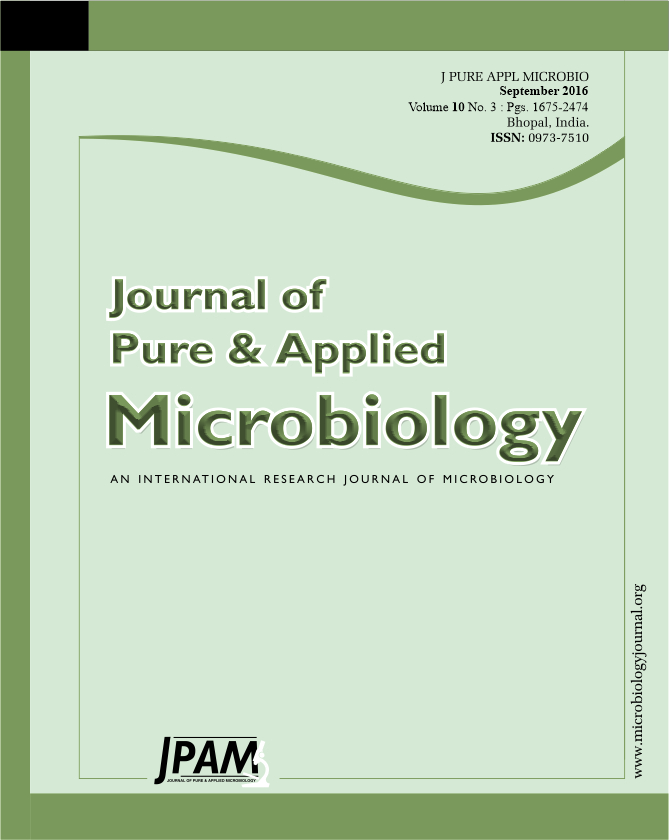The marine isolate S1 isolated from shrimp surface was screened for its potentiality in producing antibacterial activity against some Gram negative and Gram positive pathogens. It showed promising antibacterial activity with the highest antagonistic action against Aeromonas hydrophila (16 mm). It was identified as Bacillus cereus S1 using 16 S rRNA sequence analysis. Maximization of the productivity with 1.3 fold increase was achieved using Plackett Burman experimental design. The optimized medium was formulated as (g/l): peptone, 7; beef extract, 1.5; sea water concentration (50%) with pH 5 and inoculum size (0.5ml for each 25 ml medium) and incubated for 12 h. Immobilization using adsorption on pumice improved the productivity by 1.6 fold compared to the basal medium while loss of antibacterial activity was up on using entrapment technique. The bioactive compounds were characterized by thermal stability even at 100 oC while they were inactivated up on exposing to UV for 20 min. Moreover, the anticoagulant activity of B. cereus S1 was tested using PT and PTT tests. It succeed to prolong the clotting time to 40 sec and 253 sec respectively which represents about 3.3 fold and 7.2 fold compared to the control. Hexane extract was compared with other standard antibiotics and it was superior in its antibacterial effect. The extract was analyzed using gas chromatography–mass spectrometry (GC–MS). One major compound was identified as phthalic acid. Antibacterial activity of Phthalate was evidenced in previous studies.
Antibacterial, Anticoagulant, Antiinflammatory activity, Bioactive compounds, Bacillus sp.
© The Author(s) 2016. Open Access. This article is distributed under the terms of the Creative Commons Attribution 4.0 International License which permits unrestricted use, sharing, distribution, and reproduction in any medium, provided you give appropriate credit to the original author(s) and the source, provide a link to the Creative Commons license, and indicate if changes were made.


